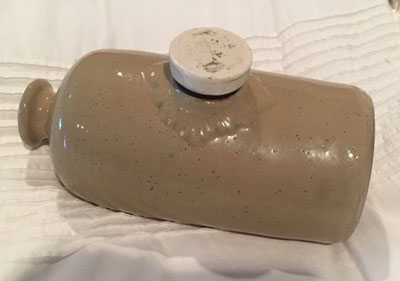
I really hate to complain about my cold feet with others throughout the United States and Canada having such frigid cold weather this winter. But the truth is, my feet are cold.
Years ago, I found this contraption in an antique store. I had never seen one before. And I have never tried to use mine to warm my feet. Instead, it is a door stop, not that I have wind blowing through the house that might make doors slam. It is simply a clever piece of trivia I own.
Watching “Little Women” on NPR recently, I saw the mother put the exact copy of my foot warmer wrapped in cloths under the bed covers when one of her daughters was ill. The March family owned at least one earthenware foot warmer like mine.
As time went on, fancier styles were created, especially in Europe. Smaller stoneware pieces were used as handwarmers, much like hunters use today. The earliest hand and foot warmers held hot coals or glowing wood. Another devise was the bed warmer, a round thin brass basket attached to a long pole. The bed warmer was usually filled with embers and placed between the sheets shortly before bedtime. The use of hot water came later.
If you were travelling in cold weather you would hope to have a foot warmer of some sort with you in the unheated carriage, sleigh, or train compartment. A pierced metal basket of hot coals was a common solution for those who could afford one. Poor people travelling by wagon or sled carried pre-heated stones and bricks with them, or even baked potatoes, under the piles of quilts and blankets. Baked potatoes were common in bed when earthenware was not available or too expensive.
Later if you were fortunate to afford a ride on a first-class rail services, you enjoyed a cabin with built-in foot warmers. Some had larger earthenware pieces on the floor for heat. Others were equipped with areas on the floor with heated piping that ran underneath the floor. I suspect Edward H. R. Green, owner of the Texas Midland Railway that came through Greenville and Commerce, furnished such comforts for his passengers.
Stoneware or metal boxes filled with hot coals were really more efficient than fireplaces in homes. The heat from the boxes stayed in the room rather than escaping through a chimney. However, the danger of household fires was a constant fear.
While I truly appreciate central heat, I sometimes curl up in a blanket in front of the fireplace and read a good book for hours. But you can bet I have on a pair of thick socks.
